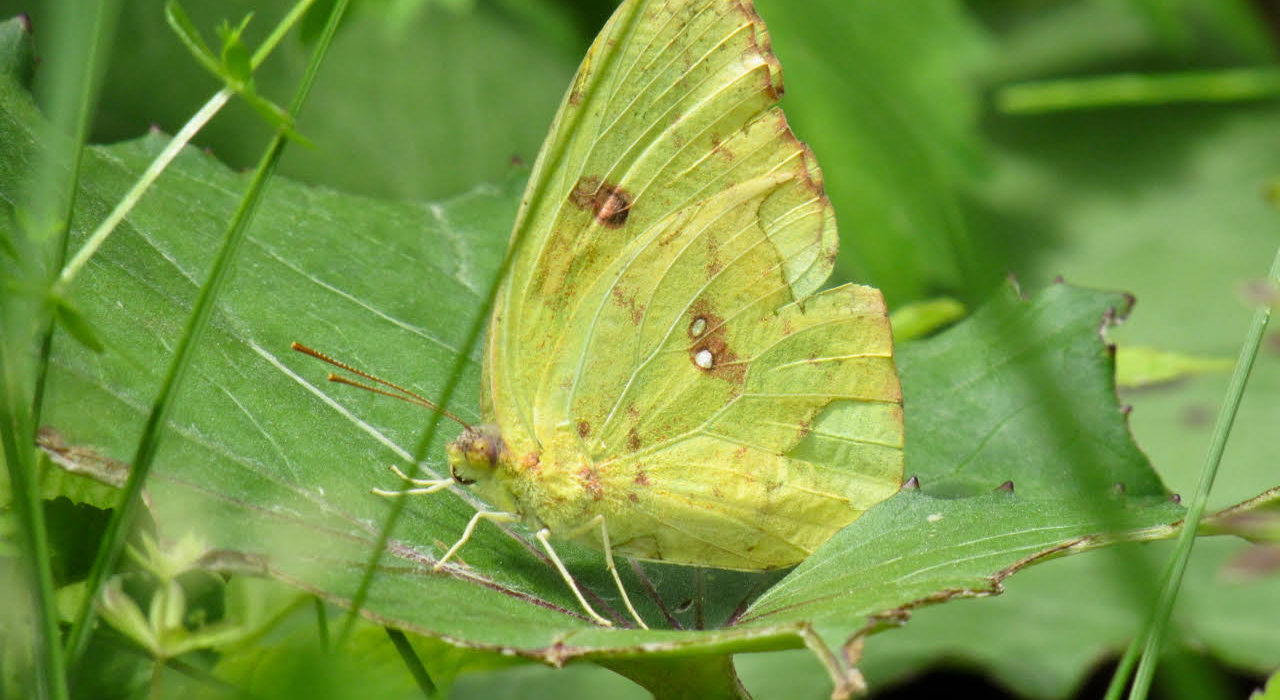Terri Armata, one of Vermont’s most ardent butterfly watchers, has seen about 100 species in Vermont, nearly every kind ever found here. But even Terri couldn’t have predicted her amazing find during an afternoon butterfly walk—the first record of a Cloudless Sulphur in Vermont.
Ranging as far south as Patagonia in South America, the Cloudless Sulphur (Phoebis sennae) is a year-round resident at least as far north as Virginia and can breed as far north as Connecticut and Rhode Island in some years. The famous lepidopterist Samuel Scudder wrote in 1899 that Cloudless Sulphur was only rarely found in southern New England. Now it is increasingly more common.
They’re famous for their seasonal movements, often irrupting northward along the Atlantic Coast. But this one found its way northward in June, and by the appearance of its ragged wings, it had an interesting journey before Terri aimed her lens on it.
“While walking a dirt road in Shaftsbury I saw an odd yellow butterfly fluttering towards me,” wrote Armata on the VTLeps email list. “I thought at first it was a small tiger swallowtail.” Until it landed and she was able to examine it closely and capture a beautiful photograph of it perched. “It was worn but I could see the forewing pm band was broken and the white spots were large and aligned.” When it flew she saw that it was bright yellow with no marking on the top and much bigger than the more common Clouded Sulphur that one would expect to be flying here.
Terri added her June 16 sighting and photograph with 9 other species she observed on a checklist to our eButterfly project–checklist number 109860, one of more than a thousand checklists she has shared to help track Vermont butterfly populations.
The only other sighting in northern New England, not far from Vermont, was in Lyme, New Hampshire on June 10th last year. It’s the farthest north we seen one so far. But things are changing and perhaps we’ll see more, and maybe even find one breeding one day.
In the northeast Cloudless Sulphur caterpillars feed mainly on Partridge Pea (Chamaecrista fasciculata), Wild Senna (Senna hebecarpa), and Sensitive Pea (Chamaecrista nictitans).The Connecticut Butterfly Atlas and observers in Massachusetts have found eggs and larvae on Partridge Pea. Although they apparently can’t survive the southern New England winters, if they arrive early enough they likely could produce one generation. Could they do that in Vermont? It is possible if more and more begin to arrive in early summer. The Vermont Atlas of Life on iNaturalist has several records scattered throughout the state for Partridge Pea, Wild Senna, and even Sensitive Pea.
Terri’s discovery represents the 115th butterfly species to be found in Vermont. What will be the next species discovered? We can’t wait to find out! You can check out all of the butterflies at the Vermont Butterfly Atlas and add your sightings at e-Butterfly.org.







